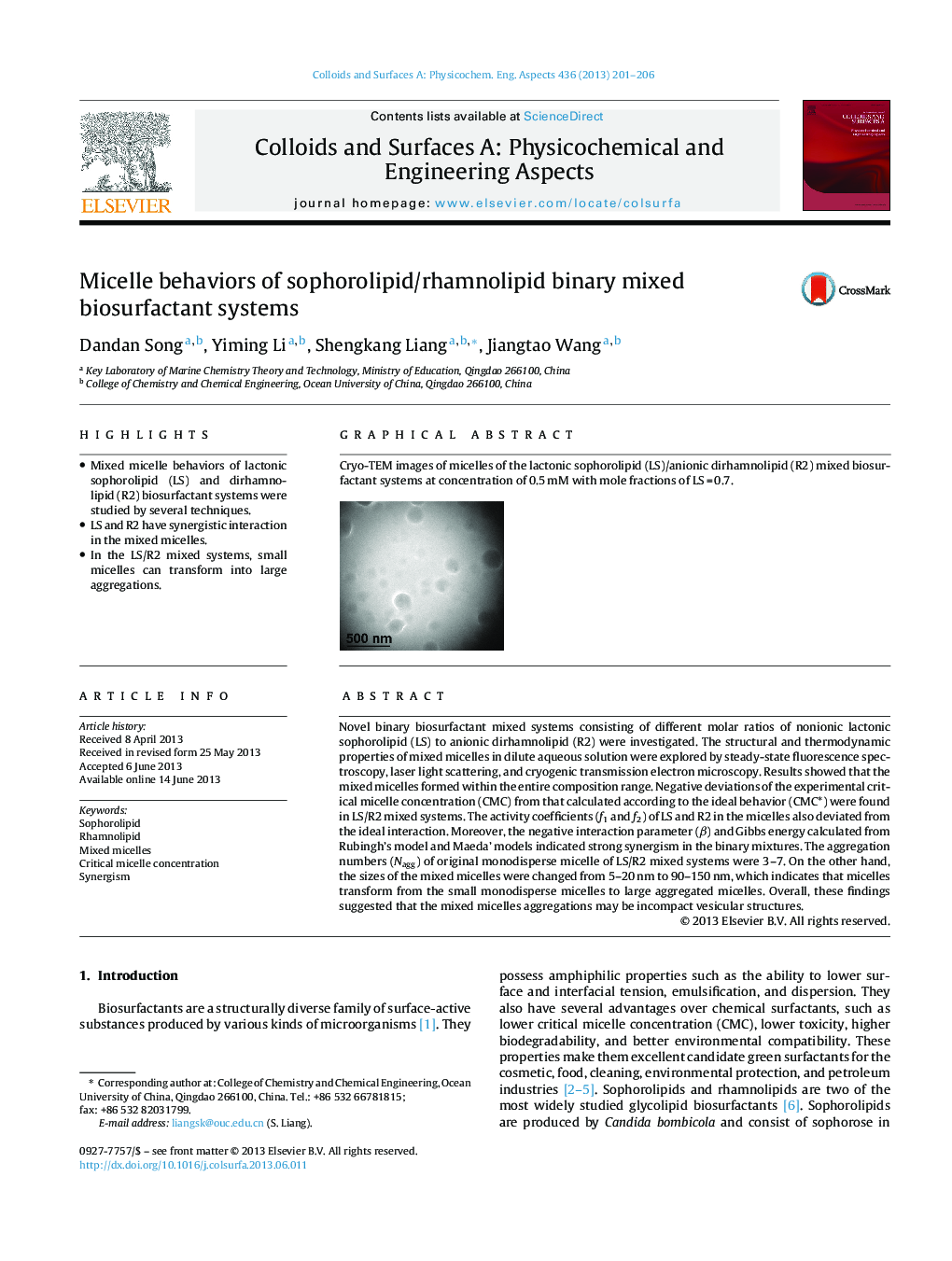| Article ID | Journal | Published Year | Pages | File Type |
|---|---|---|---|---|
| 593343 | Colloids and Surfaces A: Physicochemical and Engineering Aspects | 2013 | 6 Pages |
•Mixed micelle behaviors of lactonic sophorolipid (LS) and dirhamnolipid (R2) biosurfactant systems were studied by several techniques.•LS and R2 have synergistic interaction in the mixed micelles.•In the LS/R2 mixed systems, small micelles can transform into large aggregations.
Novel binary biosurfactant mixed systems consisting of different molar ratios of nonionic lactonic sophorolipid (LS) to anionic dirhamnolipid (R2) were investigated. The structural and thermodynamic properties of mixed micelles in dilute aqueous solution were explored by steady-state fluorescence spectroscopy, laser light scattering, and cryogenic transmission electron microscopy. Results showed that the mixed micelles formed within the entire composition range. Negative deviations of the experimental critical micelle concentration (CMC) from that calculated according to the ideal behavior (CMC*) were found in LS/R2 mixed systems. The activity coefficients (f1 and f2) of LS and R2 in the micelles also deviated from the ideal interaction. Moreover, the negative interaction parameter (β) and Gibbs energy calculated from Rubingh's model and Maeda’ models indicated strong synergism in the binary mixtures. The aggregation numbers (Nagg) of original monodisperse micelle of LS/R2 mixed systems were 3–7. On the other hand, the sizes of the mixed micelles were changed from 5–20 nm to 90–150 nm, which indicates that micelles transform from the small monodisperse micelles to large aggregated micelles. Overall, these findings suggested that the mixed micelles aggregations may be incompact vesicular structures.
Graphical abstractCryo-TEM images of micelles of the lactonic sophorolipid (LS)/anionic dirhamnolipid (R2) mixed biosurfactant systems at concentration of 0.5 mM with mole fractions of LS = 0.7.Figure optionsDownload full-size imageDownload as PowerPoint slide
